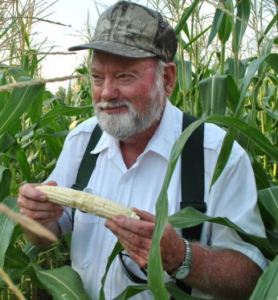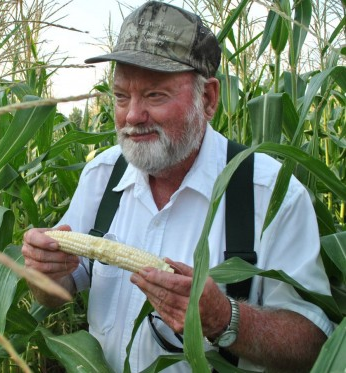This article is written by Ron Cowart, Landscape Consultant, dedicated  to those whose shoulders we stand on that came before us. He may be reached at (803) 513- 4242.
to those whose shoulders we stand on that came before us. He may be reached at (803) 513- 4242.
“What is it in it for me” is a quote from a longtime acquaintance of mine. Every time he would be asked to participate in doing something, he would ask “what is it in it for me?”
In this article, I’m going to ask you, the readership of JUNGLE TAMING, “what is it in it for you?”
I was first introduced to turf grasses and vegetables in about 1953 when working at the Sandhill Experiment Station near Pontiac, S.C. as a part time high school student during the summer. For those of you that may not know or have forgotten, the new Village at Sand Hills Shopping Center occupies a large part of the former Clemson Sandhill Experiment Station. I remember picking peppers where the Home Depot is located, and picking peaches where the Bilo store is situated.
For many years, centipede turf grass was the major turf grown for residential use, however, it had its problems. Remember, there is no perfect grass. It was well known for many years that “wiregrass” bermuda could grow almost anywhere, and therefore, a new hybrid bermuda grass was developed. Tifton and Tiftway varieties were grown and various tests were conducted on its adaptability in the sandhill region of South Carolina. The new hybrids were great for commercial and athletic fields. In those days turfgrass was sold to be sprigged and little to be sodded. Some of the original yards in Spring Valley subdivision were sprigged with bermuda and our “old friend” centipede.
Later when I was a sophomore at Clemson College, the name University was added latter, I particpated in a field trip at the Sandhill Experiment Station showing the response of centipede to various fertilizer rates. A field had been checker boarded with centipede receiving various levels of fertilizers. Guess what? The healthiest centipede plots were those that received little fertilizer. In fact there was little difference between the check plots and the low rate plots. At the end of 5 years,the higher rates were producing problems.
Years have passed and presently we have at our disposal improved varieties of the four warm season turtgrasses (1) centipede, (2) St. Augustine, (3) Bermuda and, (4) zoyaia. By the way, I believe that the large bladed zoysias will surpass centipede as our major turf grass in and around Columbia.
Today, as I visit yards in Lexington and Richland counties, I see many yards that are suffering from a rainbow of causes. Some of these causes are by people neglecting the proper cultural practices in lawn care. I see suffering lawns caused by too much watering, too much fertilizing, fertilizing at the wrong time of year, fertilizing with the wrong grades of fertilizer, fertilizing based upon NO soil tests, too much pre-emergent herbicides, applying pre-emergent herbicides at the wrong time of year and the list goes on. Now, I ask, you the reader, “what is it in it for you”
The answer will be in the next issue of Jungle Taming’s Southern Master Gardening. Be sure to read it.





